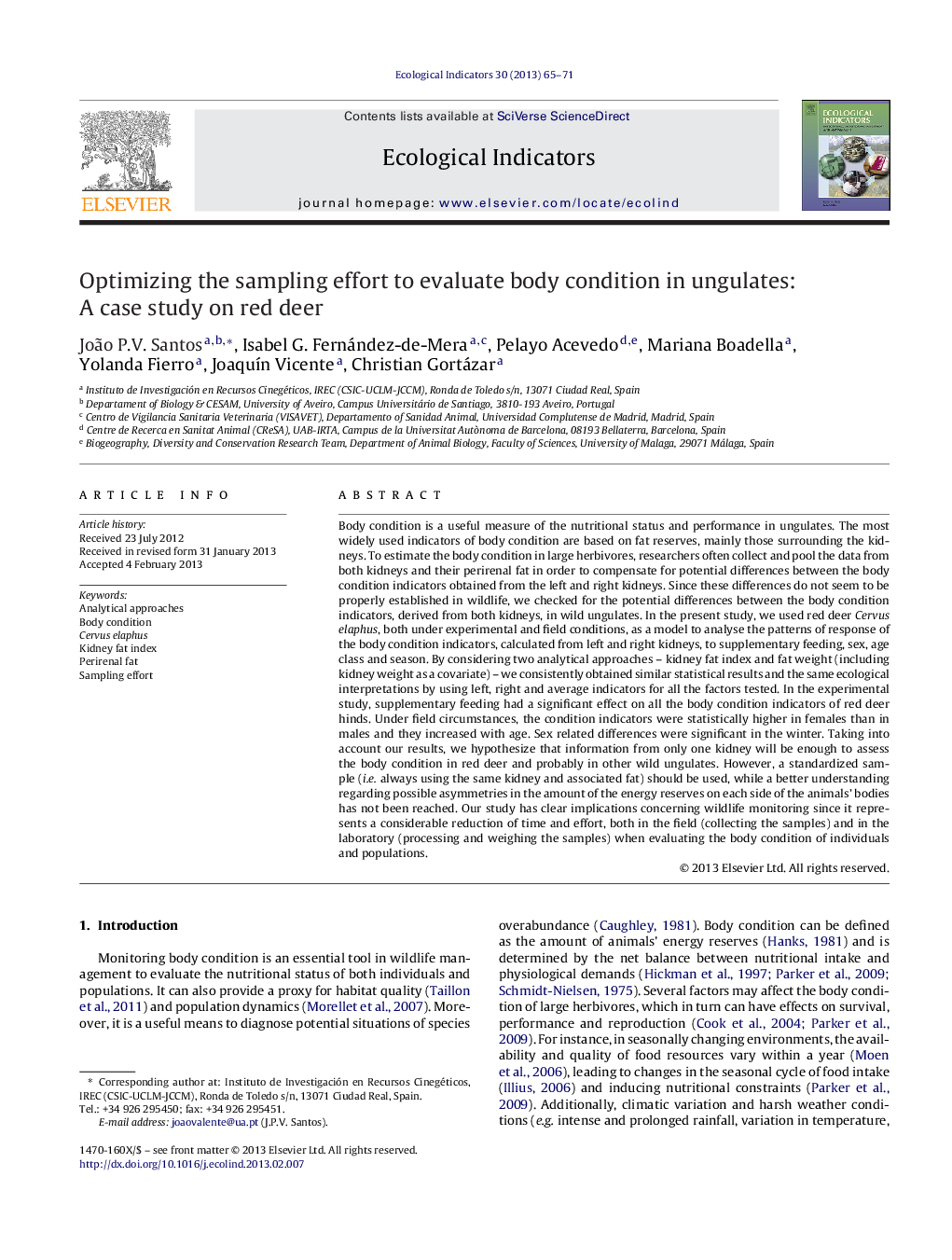| کد مقاله | کد نشریه | سال انتشار | مقاله انگلیسی | نسخه تمام متن |
|---|---|---|---|---|
| 4373424 | 1617170 | 2013 | 7 صفحه PDF | دانلود رایگان |

Body condition is a useful measure of the nutritional status and performance in ungulates. The most widely used indicators of body condition are based on fat reserves, mainly those surrounding the kidneys. To estimate the body condition in large herbivores, researchers often collect and pool the data from both kidneys and their perirenal fat in order to compensate for potential differences between the body condition indicators obtained from the left and right kidneys. Since these differences do not seem to be properly established in wildlife, we checked for the potential differences between the body condition indicators, derived from both kidneys, in wild ungulates. In the present study, we used red deer Cervus elaphus, both under experimental and field conditions, as a model to analyse the patterns of response of the body condition indicators, calculated from left and right kidneys, to supplementary feeding, sex, age class and season. By considering two analytical approaches – kidney fat index and fat weight (including kidney weight as a covariate) – we consistently obtained similar statistical results and the same ecological interpretations by using left, right and average indicators for all the factors tested. In the experimental study, supplementary feeding had a significant effect on all the body condition indicators of red deer hinds. Under field circumstances, the condition indicators were statistically higher in females than in males and they increased with age. Sex related differences were significant in the winter. Taking into account our results, we hypothesize that information from only one kidney will be enough to assess the body condition in red deer and probably in other wild ungulates. However, a standardized sample (i.e. always using the same kidney and associated fat) should be used, while a better understanding regarding possible asymmetries in the amount of the energy reserves on each side of the animals’ bodies has not been reached. Our study has clear implications concerning wildlife monitoring since it represents a considerable reduction of time and effort, both in the field (collecting the samples) and in the laboratory (processing and weighing the samples) when evaluating the body condition of individuals and populations.
► Body condition indicators responded to ecological/biological factors.
► Same results by using left, right or average indicators.
► Only one kidney with its perirenal fat may be enough to assess body condition.
Journal: Ecological Indicators - Volume 30, July 2013, Pages 65–71